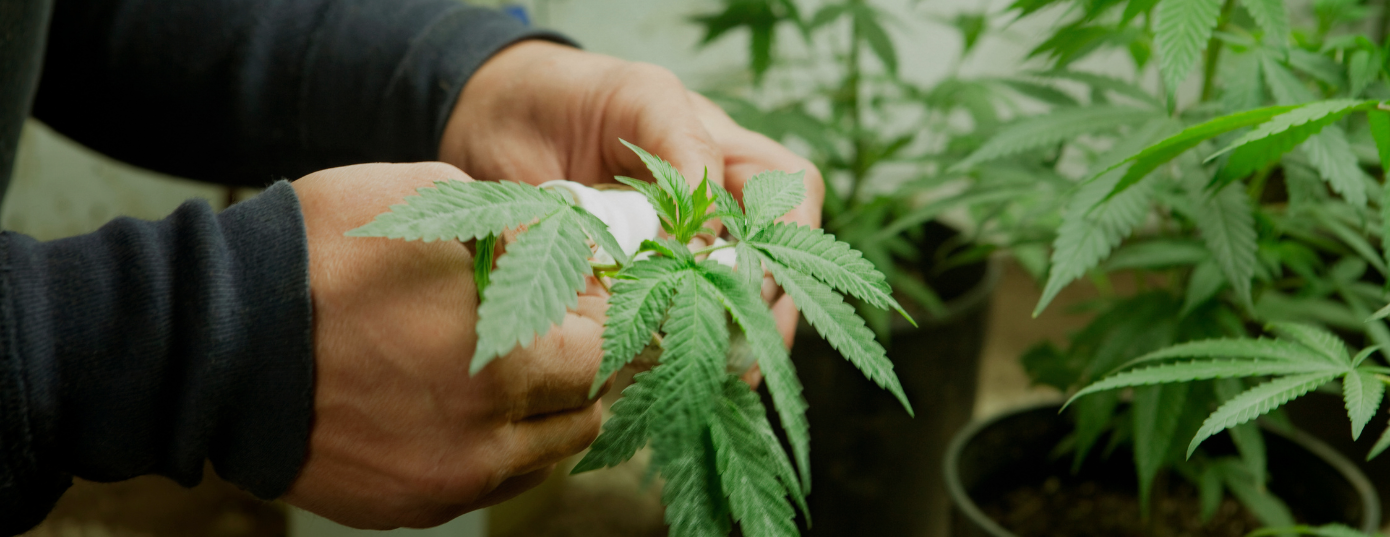It’s the nightmare of every recreational gardener: you come home one night from work, you have been thinking of smoking a big fat joint as soon as you come home to relax, turn on the lights and you realize your plants… don’t look good, man. You can’t tell at first glance what is wrong, but something definitely is off. Maybe the plant looks sad, or the colors are strange.
Whatever the case, your plants need help (and fast!), or else your precious crop is in risk of getting lost. Don’t fret, though. Here at HOJ, we offer you this list of the most common illnesses of cannabis, the symptoms you need to watch out for, and the things you need to do to ensure your happy garden grows strong and vast.
Good luck!
Bud Rot
It’s very rewarding to grow plants of any kind, let alone some good weed, but it’s a hobby that requires patience, care and a good eye to spot the signs that your plants may have something not quite okay with them.
Take for example, bud rot. Also known in some circles as “gray mold”, this illness makes cannabis very fragile, and smothers it little by little. However, since this condition starts in the inside of the plant, spotting it on time is crucial. Have you noticed any strange colors in your herbs? The leaves come off a little too easily? Have you noticed cobwebs in the plant? Then be careful.
The most common way for a bud to rot is through a fungal infection, usually one named Pythium, which can come from almost anywhere (nearby plants, insects visiting, suspect dirt, etc.) and is especially vicious with either clonal or younger plants. It turns the bark brown at the base, and a humid environment encourages the fungi to grow like there’s no tomorrow. So what to do then?
The treatment: With a couple of sterilized scissors (alcohol wipes might be enough), cut the infected branches, but don’t forget to re-sterilize your tools between each removal, as the spores of the Pythium are very easily disseminated. There’s really no other way around it, but if you manage to cut off every infected branch, you may save your plant. And be watchful of any returning brown stains!
Yellow Spot
This one is easy to spot, and it’s always bad news: as the name implies, seeing yellow dots in your plants should send you into damage control mode, as this other fungal infection can obliterate an entire crop.
And unlike the Pythium infection, this one attacks the leaves of the older plants first (the best ones, indeed), and it’s often the result of growing cannabis with poor airflow, as well as leaving too much moisture in your plants, which can happen after rainfall if you grow your cannabis outside.
The treatment: A quick intervention is needed here too, so the sterilized scissors will need to come out. Also, to handle Yellow Spot, we also recommend you to put on latex gloves, as this fungus can get in your skin easily and spread from there.
You should also have a fungicide on hand, and spray the soil and every nearby plant even if you don’t see yellow dots on them (yet).
Fungus Gnats
Fun thing to say, bad thing to have. That’s how we describe “fungus gnats”, a plague of small insects that can quickly kill any plant if you are not careful. The fungus gnats are superficially similar to fruit flies, pestering the plant every time you look around.
However, those are not the real problem, as they don’t actually do anything to the stem or leaves of the plant. No, the real issue is the larvae of the gnats, which can burrow in the soil of your cannabis and eat the roots. Now, we can't fault the gnats for having a good time, but your weed will suffer for it, so what to do?
The treatment: Sadly, you can’t do anything immediately about them, but a good way to stop them is to let the soil of your cannabis dry completely before the next watering. This is because the larvae thrive in very humid environments, and their presence indicates that you might be overwatering your plants. So don’t panic, leave your cannabis dry for a couple days, and the problem might go away on their own.
Hermaphrodites
Here comes a fact that may take you by surprise: the cannabis plant can be male, female, or in some cases, hermaphrodites. Plant biology is fascinating, although in the case of weed, having an hermaphrodite plant can be bad news, not because it’s an illness, but because it can ruin the flavor of your weed, which in some ways is worse.
Now, first things first: growing your own weed requires manipulation of the plants that simply don’t happen in nature, and the root of the problem lies in having female cannabis specimens that can go for a long time without being pollinated. This is good (for you, at least), because this process makes the plant “focus” on producing THC, the chemical that actually gives the high. And since these long periods are not normal, the plant can throw a last ditch effort in pollinating itself and grow hermaphrodite plants with both male and female organs. Fascinating, isn't it?
However, there lies the issue: if the plant pollinates itself, then it may stop producing THC, so the resulting plants will be lacking in flavor, effect and body, so it’s in the interest of a good time to spot hermaphrodites early to stop any pollinating.
The treatment: Look out for these buds in your plant. Most of your plants should be female in order for them to produce THC, so having these organs show up might mean there’s some hermaphroditism going on. If you spot them, we recommend you harvest them immediately; they might not be as good, but still smokable, and you will save your female plants from pollination.
With these tips, you can save your cannabis from the most common issues. Weed is a very resilient plant, able to grow almost everywhere, but having a little know-how on how to spot any issues early can (and will!) save you many headaches. And you will not have weed to help with that, so get inspecting, and happy harvest!
Author: Shaggy


0 comments